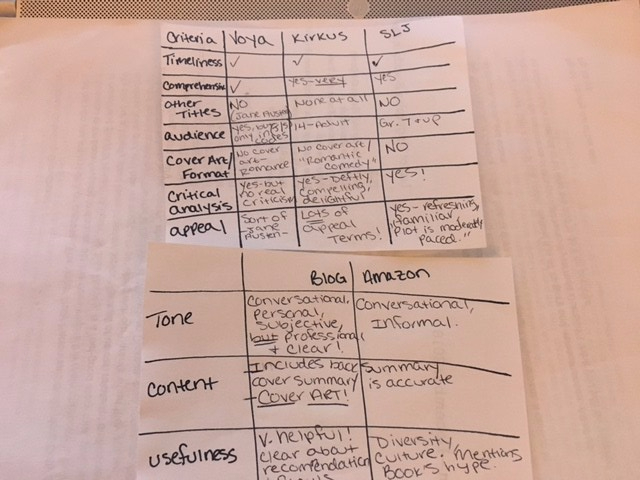We’re in the homestretch! Here’s the final assignment, a selection list based on Here We Are: Feminism for the Real World, created by Lindsay Christ and I. Enjoy!
Carruba and Christ Selection project
739M Carruba Christ Selection References

We’re in the homestretch! Here’s the final assignment, a selection list based on Here We Are: Feminism for the Real World, created by Lindsay Christ and I. Enjoy!
Carruba and Christ Selection project
739M Carruba Christ Selection References

Two months ago, I wrote about how difficult it is to build a balanced, teen-centered collection free from personal bias.
I still believe this is a big task, though there are some clear steps I would take to reach this goal from a policy perspective:



References
Agosto, D. (2013). “Envisaging Young-Adult Librarianship from a Teen-Centered Perspective.” In Transforming Young Adult Services, edited by Anthony Bernier, pp. 33-52. Chicago: Neal-Schuman.
Cart, M. (2016). The New Nonfiction. In Young adult literature: from romance to realism, pp. 223231. Chicago: ALA Neal-Schuman
Jensen, K. (2014). “Collection development: Making the case for teen collections.” Booth, H. & Jensen, K. (eds.) (2014). The Whole Library Handbook: Teen Services. Chicago: ALA, pp. 91-104.
Pikes Peak Library District (2016). Challenged materials policy. Retrieved from https://ppld.org/challenged-materials-policy
The following reviews were written for teens. Enjoy!
Vaughan, B.K. (2016). Paper Girls (vol.1). Berkeley, CA: Image Comics.

What would you do if something invaded your town and started snatching people from the sky? This is the problem faced by four twelve-year-olds in the first volume of Paper Girls, an exciting graphic novel. Erin, Mac, KJ, and Tiffany are newspaper delivery girls, out delivering their papers in the early morning after Halloween in 1988. They’re used to being bothered by bullies and know how to take care of themselves. But when hooded figures speaking a strange language steal their walkie talkies, the girls realize they’re dealing with something more dangerous than neighborhood jerks. Things go from weird to weirder, and the action never stops. If you like science fiction and/or binged Stranger Things, this is the book for you. The story continues in Volumes 2 and 3, which you will want to read. Once you get to know the “paper girls,” you’ll want to find out how their story ends.
Kidd, C. (2013). Go: A Kidd’s guide to graphic design. New York: Workman.
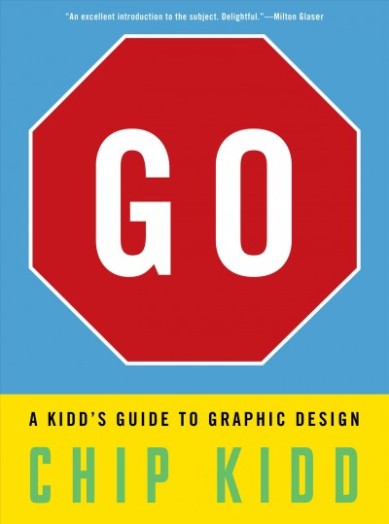
If you’ve ever picked up a book because you loved the cover or used filters or Photoshop to change the look of your selfies, Go: A Kidd’s Guide to Graphic Design by Chip Kidd might be the book for you. Chip Kidd is a successful graphic artist who has designed over 1,000 book covers, including the cover for the iconic Jurassic Park. With his guide, you will learn about fonts, color theory, layout, image quality, and more. Kidd’s explanations are easy to understand and fun to look at; Go is a little oversized, with cardboard covers and cool images on every page. It’s unlike any book you’ve read before! Included at the end are a few simple and fun design projects to challenge your creativity. Before you know it, you could be designing the next great logo, movie poster, or best-selling book.
Merriam-Webster defines gatekeeper as “a person who controls access.” Martens (2011) points to librarians as the traditional gatekeepers of young adult literature (p.53). We were once the direct link to publishers, who often wooed us with ARCs and promises of author visits. Now, thanks to Twitter, Instagram, electronic newsletters and Internet marketing campaigns, publishers (and by extent, the authors themselves) don’t call upon us wingmen as often; they can directly woo the teens themselves! However, while teens are virtually “wined and dined” so to speak, they are actually tricked into marketing products without receiving any real compensation.
This scenario also exists for the many teens depicted in The Merchants of Cool (2001) and Generation Like (2014). They either believe themselves to be trendsetters, hustling their way to fame and fortune, or they are fandom elites, catching the eye of their favorite celeb; really, as Rushkoff points out in The Merchants of Cool, it’s all a “giant feedback loop,” with the companies studying teens’ viewing and spending habits and then selling them images of themselves, which they then emulate and so on and so on. Who is the gatekeeper? Who is in control? It’s murky territory.
This is the point when I should probably rage against the corporate machine. Honestly, though, I don’t see the point because I can’t imagine corporate culture changing anytime soon, nor will Youtube and Instagram stop churning out “personalities,” many of whom are not old enough to legally drink or even vote. Also, part of me wonders, What’s the harm? If the teen in Generation Like finds happiness in sharing The Hunger Games promotional material because it leads to a tweet from an actor in the films, so what? She’s not harming herself, she’s not being sexually exploited or bullied, and she’s able to find some measure of fulfillment during a period of life typically known for tumult. Also, if these teens really understood the nuanced machinations dictating their retweets, would they even care? When I was an adolescent, not only did I own all the Spice Girls CDs, but I also went to the theater to see Spice World, and bought the Spice Girls dolls, pogs, and lollipops. If you told me I was being used like a cog in some big money making machine without receiving any of the profits, I would have simply blinked and gone about buying my Spice Girls lollipops and watching my Spice World VHS because I loved the Spice Girls and wanted to prove my fervor.

“Generation like,” and adult society’s frustration with said generation, is both the cause and the result of parents no longer being the primary “gatekeepers” in their children’s lives. The advent of social media means parents are no longer the primary influencers. Parents, in response, continue their gatekeeping in the virtual plane, which only pushes teens farther into the social media realm, hopscotching from one platform to another as soon as the parental units invade.

boyd (2014) says that teens wanting a space of their own is a direct result of parents constantly monitoring their children’s online use and restricting their physical interactions with friends, thanks to curfew laws. Anderson (2016) reports that 61% of parents questioned have checked the websites their teen visits, 60% have checked their teen’s social media, and 16% have even used their teen’s cellphone to track their location. It’s understandable that parents want to protect their children, and I’m not saying they have no reason to resort to these measures. However, given such tight monitoring, it is equally understandable for teens to want to chart their own course, independent of their parents. This is the somewhat natural result of overzealous gatekeeping. Enter social media, with its promise of connections.
As librarians, I don’t think we’ll make much headway if we try to act like their parents, like just another gatekeeping authority taking away their independence, however tenuous it may be. Rather, let’s take some cues from the documentaries and try the following:
We are no longer the ultimate gatekeepers, but we can still positively influence, guide, and assist. Ironically, maybe we librarians are the ones who have to “play it cool,” stop fighting against social media culture and instead work with it. Show other sides to it that truly do empower teens, not because they’re peddling someone else’s moneymaker, but because they are showcasing their talents with their own stamp of approval.

References
A Mighty Girl (2017, September 6). In Facebook. Retrieved from https://www.facebook.com/amightygirl/photos/a.360833590619627.72897.316489315054055/1451617441541231/?type=3&theater
Anderson, M. (2016, January 7). “Parents, teens digital monitoring.” Pew Research Center. Retrieved from http://www.pewinternet.org/2016/01/07/parents-teens-and-digital-monitoring/
Martens, Marianne (2011). “Transmedia teens: Affect, immaterial labor, and user-generated content.” Convergence: The Journal of Research into New Media Technologies 17 (1), 49-68.
Merriam-Webster (2017). “Gatekeeper.” Retrieved from https://www.merriam-webster.com/dictionary/gatekeeper
Rushkoff, D. (2014) Frontline: Generation Like. [Video file]. Retrieved from http://www.pbs.org/wgbh/frontline/film/generation-like/
Rushkoff, D. (2001). Frontline: Merchants of Cool. [Video file]. Retrieved from http://www.pbs.org/wgbh/pages/frontline/shows/cool/view/
WGBHForum. (February 26, 2014) danah boyd: It’s Complicated – The Social Lives of Networked Teens. [Video file]. Retrieved from https://www.youtube.com/watch?v=2yCHI8WCbDY
Episodes I listened to:
Episode 111 (Jennifer E. Smith), Episode 114 (Kara Thomas), Episode 121 (Dan Santat)
First Draft is such a fun podcast! Host Sarah Enni travels across the country to interview different YA authors about their lives, careers, and writing processes; it’s similar to a relaxed Inside the Actor’s Studio.
There a few ways I can see First Draft playing a role in my professional development. First, the format of Enni’s production is like a buffet of YA materials, between the authors she interviews and the different books, movies, etc. mentioned during the interviews (all helpfully listed and occasionally annotated as “show notes” on the First Draft website, a feature I love). As a YA librarian, I would need to be familiar with as many YA books as possible, from all genres. Listening to this podcast while paying special attention to authors with whom I am not familiar could lead to new discoveries. The more I know, the more I can purchase for my collection and recommend to my teens. Successful book talks, book discussions, book clubs, and author visits can all come from this podcast. Again, I also cannot stress enough that these talks lead to broader conversations and reference everything from tv shows to board games to all types of other books. First Draft really is a great source for general pop culture knowledge.
Secondly, I think First Draft itself should be added to my list of materials to be recommended to teen patrons. What’s great about this podcast is that all the participants respect teens. Teens can see how much care is put into media created for them; they can recognize that their experiences, fears, and struggles are appreciated. When teens listen to episodes, they might connect with certain authors and be inspired to seek out their work. Similarly, they might also find solace and guidance in listening to the hardships certain authors have overcome. For example, Dan Santat spoke about his wife’s struggles with anxiety and his own struggle in balancing the desires of his parents–immigrants who wanted him to become a doctor–with his own dream of becoming an artist and storyteller; Kara Thomas had a TV show deal that fell through, was diagnosed with a chronic illness and her then-boyfriend (now husband) was diagnosed with cancer. The ability to persevere and be successful in spite of hardships is a positive message for teens to receive.
McGuire, K. (2015). The teen money manual: A guide to cash, credit, spending, saving, work, wealth, and more. North Mankato, MN: Capstone Young Readers.
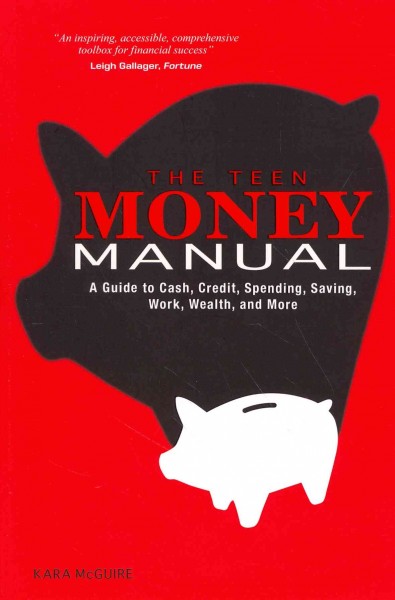
I’ve always hated learning about money. As an adult, all things finance intimidate me, mostly because I don’t understand them and money was never a subject easily discussed in my family. This is why I decided to read The Money Manual: teens have a greater chance of success if they learn early how to manage their money so that it’s not a part of life they’re constantly fighting against. I was intrigued to see if McGuire could write about a potentially dry subject in a way that would appeal to teens.
This book has some good things going for it: bold graphics, large font size, illustrations to break up text, clearly delineated chapters, a helpful glossary, and a broad scope that includes interview tips, resume writing, and ostensibly all areas of pertinent finance. All of these would entice teens to pick this book over others on the subject. However, there are several glaring flaws. First and foremost the author seems to write with the assumption that all teens are middle to upper class, with college a foregone conclusion. She keeps harping on the importance of college without understanding that for some, college might never be a reality. Similarly, McGuire writes about teens’ expenses, listing pizza money/entertainment, gasoline, car insurance, and class ski trips. (Let’s talk about the ski trips for a moment; she mentions ski trips more than once, which to me is the height of absurdity and shows how out of touch she is with most of America. Aside from the kids on Beverly Hills, 90210 I do not know a single human being that has gone on a high school ski trip. Ever.). She ignores the fact that many teens have adult responsibilities and are either partially or completely supporting their families while also attending high school. For only $9.95 (or less if using a vendor like Baker & Taylor) this is a decent purchase for some collections, as teens could get a basic sense for managing money. However, I would skip it if you work in a more diverse community with teens whose paths are less “traditional.”
I would pair it with the following book:
Currie, S. (2016). Teen guide to saving and investing. San Diego: ReferencePoint Press.
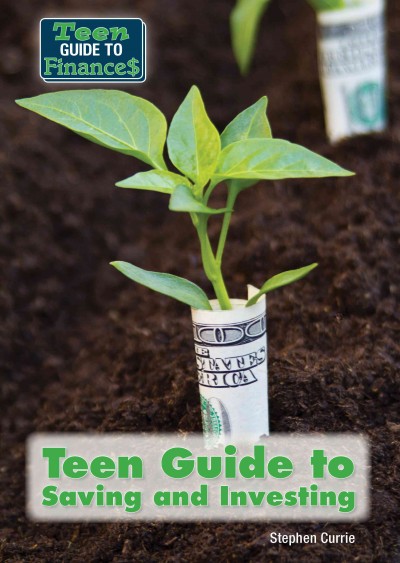
I found this read-alike using NoveList. I also browsed Goodreads and Amazon, but there seem to be slim pickings for books about money that are geared to teens and are not cheesy looking. This is not an ideal pick, but it’s only 64 pages (teens won’t be intimidated by page length) and could provide some helpful advice for teens who want more focused information on investing.
Quality: 3Q
Popularity: 2P
Grade Level Interest: S, Grades 9-12
Appeal Factors: accessible, browsable, easy-to-understand.
References
Healy, J. & Fremson, R. (June 23, 2017). Out of High School, Into Real Life. The New York Times. Retrieved from https://www.nytimes.com/2017/06/23/us/out-of-highschool-into-real-life.html
I decided to write a summary of my thoughts on The Darkest Part of the Forest, since there were a few students in the other section who had a different take on it and I cannot explain myself completely enough through Twitter. This is a totally voluntary post, so I won’t be abiding by any rules regarding post length/format. In the words of Billy Eichner, And away we go…
I do not read fantasy. The most notable fantasy reading I have done is the Harry Potter series, which can probably be considered a pinnacle of modern fantasy. Maybe I was spoiled by Rowling’s intricate world building, the complex characters, the political allegory and social commentary, and the thoroughly compelling magical elements. Maybe that’s why I expected more from this book. Or maybe it just isn’t that good?
I decided to read this selection mostly because it seemed like “realistic” fantasy; humans and fairies live beside one another and the magic is treated as a somewhat normal part of life. It presented as a high school drama with magical elements. Much more my type of reading!
Here’s a problem, though: Holly Black can’t figure out if she’s writing a high school drama/romance or an epic fantasy. Perhaps a more skilled writer could have blended the two genres more successfully, but in my opinion, she did not. As a result, neither the high school elements, nor the magical elements, felt fully realized. What is more troubling, however, is the lack of character development and the creation of compelling characters. Black pinned a lot on Hazel, writing her as a nymphette-knight who is flirtatious and loyal, courageous and destined for some epic fate or heroic demise. But, am I the only one who found her to be…blah? Ben, on the other hand, as an out high schooler and musical prodigy was a far more compelling character. Had Ben been the star of the story, and his star-crossed romance with Severin been a focal point, this could have been a much more craveable book, the kind you think about while you’re at work and can’t wait to get back to.
There are two specific examples that, to me, point to poor character development. Both of these are character insights revealed within the last 50 pages or so and both were surprises to me, though they were clearly supposed to be understood as implicit far earlier in the story. First, Hazel explains that the reason she never gets involved in serious relationships is because of the bargain she made with the Alderking to take seven years of her life. She never knew when those seven years would be taken, so she never wanted to get close to anyone. Maybe I wasn’t reading closely enough, but I never saw that as Hazel’s motivation for anything. Again: I thought Hazel was basically a flat character. Secondly, Hazel’s and Ben’s parents are bohemian artists who let their young children run wild to stumble upon dead bodies and kill monsters. Yeah, they’re inattentive parents who probably never should have been parents. I understand that having subpar parents has an effect on a child, but suddenly it’s pointed out at the end of the book how messed up Hazel is because of them (I already returned my copy to the library, so I can’t provide exact quotes), but that should have been clear much, much earlier without it being told to us. Too much telling, not enough showing. The breadcrumbs that Black threw down were too few and far between for us (or me) to draw the conclusions she intended.
Dr. Serantes mentioned in Monday’s class that Holly Black typically writes series. Maybe this could be an explanation; she is used to characters and stories developing over several books and is unaccustomed to the pace needed to sustain a stand-alone title. (However, I would argue that if you read any of the Harry Potter books, each character would feel nuanced and the story would be complete, compelling, and full-circle on its own).
I am sure many fantasy fans, particularly upper middle grade and early high school, would enjoy this book. Holly Black is a recognizable name with a following. My guess is that were The Darkest Part of the Forest make it onto the favorites list of a young reader, it would be a middling pick; not complete garbage, but not a home run, either. Depending on how well fantasy books and Holly Black’s books circulate in my library, I would probably buy this for my collection but it would not be a book that I would recommend.
As with any other book, this is just my interpretation. And keep in mind, I AM NOT A FANTASY READER. If you liked, enjoyed, or loved The Darkest Part of the Forest, that’s great. I’ve happily read and enjoyed many books that others would scathingly disapprove of (ahem…Twilight, every Chelsea Handler book, every Tori Spelling book, the list goes on…judge me if you will, I can handle it). I guess this is just the beauty of reading. For every person that loves a book, there will always be another who loathed it.
P.S. I can’t believe I just wrote an entire post about a book I didn’t want to write about during my free week. I blame you, Dr. Serantes. You created this monster.

Fagan, K. (2017). What made Maddy run: The secret struggles and tragic death of an all-American teen [Unabridged Audiobook]. New York: Hachette Audio.
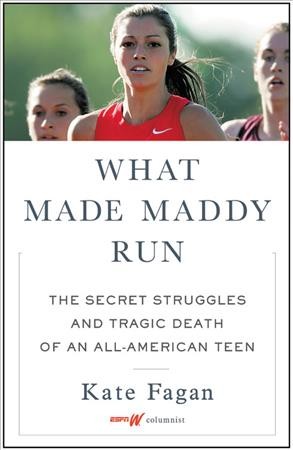
Though there were many stellar options for this week, I was immediately drawn to this title. I correctly suspected it dealt with mental health, a topic I wish was discussed more openly and destigmatized. As someone with a personal and family history of mental illness, I understand how isolating it can be, especially when you’re a teen. I wish I could say my decision to listen to the audio (via my library’s Libby app) was more thoughtful, but really I saw it was available and being able to listen–while driving, exercising, doing other things–was most conducive to my schedule.
Only one library in Nassau and Suffolk counties has this book in their teen collection (good job, Cutchogue-New Suffolk Free Library!). This is unfortunate because all teens should read this book. Madison Holleran’s seemingly idyllic life as a beautiful, popular, promising young woman is proof appearances can be deceiving. Maddy’s struggles with depression and the pressure to be perfect will resonate with many teens. I would recommend libraries purchase two copies, one for the teen section and one for the adult section. This is the perfect book for parents and teens to read together and generate a thoughtful dialogue.
I would pair this with the following books:
Britz, A. (2017). Obsessed: A memoir of my life with OCD. New York, NY: Simon Pulse.

Toner, J.B. & Freeland, C.A.B. (2016). Depression: A teen’s guide to survive and thrive. Washington, D.C.: Magination Press.

I used NoveList to find Obsessed. However, I did not use the Read-Alike function because I was unsatisfied with the responses, which were outdated and marketed more to adults than teens (Yes, What Made Maddy Run is also marketed to adults, but it is the story of a 19-year-old, a quality not found in the batch of read-alikes returned to me). Instead, I browsed by genre, selected “Teen” and “New and Popular…in Nonfiction.” I got lucky that Obsessed came up immediately. For the second read-alike, I searched my library’s catalog for “teens and depression.” I liked that this book was current and seems to provide concrete coping mechanisms for dealing with depression.
Appeal terms: Thoughtful, journalistic, comprehensive, compelling
Quality: 4P*
Popularity: 3P (only because it’s nonfiction, about such a heavy topic, and might need to be “talked up” to generate interest)
Grade Level Interest: A/YA; when marketed to teens, best suited for grades 9-12
*The quality of Fagan’s writing is excellent. However, I am deducting a level because of her audio narration. While her tone is warm, comforting, and filled with appropriate emotions, there were times when she seemed to be talking too slowly and it became slightly infuriating.

Atheneum Books for Young Readers is an imprint of Simon & Schuster that focuses exclusively on books for children and teens. Atheneum is an established publisher with popular and respected titles in its catalog, and with the backing of global publishing giant Simon & Schuster, it is clearly a dominant force in the publishing of books for younger readers. It was founded in 1961 by editor Jean Karl. In the years since its founding, it has published multiple award- winning books, including Shiloh by Phyllis Reynolds Naylor (winner of the 1992 Newbery Award), The House of the Scorpion by Nancy Farmer (2002 National Book Award for Young People’s Literature, 2003 Michael L. Printz Award Honor Book), and All American Boys by Jason Reynolds and Brendan Kiely (2016 Coretta Scott King Honor Award). Although Atheneum does not have a Twitter account, it appears to be included within the @SimonKids handle, as evidenced by its recent tweet promoting the ebook version of From the Mixed-Up Files of Mrs. Basil E. Frankweiler, which is included in Atheneum’s digital catalog. The Atheneum website does not link to any social media pages, though it does provide options for users to share the publisher’s page through their own SNS accounts. Their website includes a complete catalog listing of back and current titles, which can be filtered by subgenres, including “teen fiction,” “teen nonfiction,” and many others. Because they are known for publishing popular and classic titles, it is safe to say that much of their catalog is likely still in print. In addition to the authors previously mentioned, Atheneum has also published the Grand Master of Teen Literature, the one and only Judy Blume. Perhaps the best known work is Are You There, God? It’s Me, Margaret. Reviews are available from Kirkus Reviews and Commonsense Media.
References
Atheneum Books for Young Readers (n.d.). Retrieved from
Review of Ghost (2016) by Jason Reynolds in the style of School Library Journal.
Reynolds, J. (2016). Ghost. New York: Atheneum Books.

Gr. 5-9. Castle Crenshaw is an African American young man with a traumatic past and a chip on his shoulder. He and his hardworking single mother live in a rundown apartment complex, where Castle is haunted by memories of his abusive father. School isn’t better; he’s taunted by a classmate for everything from his clothes to his name and often reacts violently, getting into “altercations” and building up a thick rap sheet with his principal. When Castle inserts himself into a track practice and makes the team, he gains a surrogate father in Coach and becomes part of a diverse and talented team of young athletes. Ghost, as he rechristened himself, learns to channel his anger and fear into grit and determination. Reynolds’ latest is an inspiring read for athletes and non-athletes alike. Ghost is a character readers will root for, not in spite of his flaws but because of them. A plot point involving Castle’s decision to steal an expensive pair of running shoes is especially well done and displays Reynolds’ adept ability at making his characters multidimensional. This is the first in a new series of Track books, with each installment focusing on a different member of the Defenders track team. VERDICT: Ghost is a must-have for all children’s and tween collections. A winning start to the Track series.
Review of When Dimple Met Rishi by Sandyha Menon in the style of VOYA.
Menon, S. (2017). When Dimple Met Rishi. New York: Simon Pulse.

Dimple Shah is an Indian American teen and recent high school graduate with dreams of becoming of a famous coder. She’s convinced her tradition-minded parents to send her to Insomnia Con at San Francisco State University, where she will spend six weeks developing her dream app. Much to her mother’s chagrin, she has no interest in becoming a marketable marriage prospect. Meanwhile, Rishi Patel is a good Indian-American boy intent on pleasing his parents and honoring his culture; he will enter a practical career and marry a good Indian girl. When Rishi’s and Dimple’s parents scheme to arrange their marriage, the two have a humorous meet cute, with Dimple throwing her iced coffee in Rishi’s face and setting in motion a witty, contemporary romance that reads like a romcom for the page.
When Dimple Met Rishi is a welcome addition to the limited selection of YA romances featuring South Asian teens, including Lovetorn and Born Confused. Menon expertly describes Dimple’s sense of cultural disconnection; as a tech-loving female, she feels like an outsider in American culture, while also feeling too “American” for traditional Indian culture. Readers will be pleased to see the male portrayed as the romantic, wistful character for once. In fact, when the question of sex is raised, Dimple knows she wants to go through with it, while Rishi is the one who works through guilt about parental and cultural expectations. Though their relationship moves quickly, the emotions are expressed authentically. 4Q 4 P S
An Analysis of the Reviews:
I compared professional reviews of When Dimple Met Rishi, as found in VOYA, School Library Journal, and Kirkus Reviews, with amateur reviews on Amazon and from the Canadian blog Musings of a YA Reader. Here are my findings:
